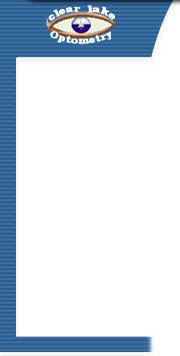| |
Frequently Asked Questions:
Is my computer monitor contributing to eyestrain?
- Although there is no evidence that using a computer causes permanent vision problems,
it can lead to eyestrain, eye fatique and glare-related headaches that can affect computer users'
productivity and leave them feeling tired at the end of the day.
What are some commonly reported concerns experienced by computer users?
- Dry or irritaed eyes
- Burning, itchy or watery eyes
- fatique, including heaviness of the eyelids or forehead
- difficulty in focusing
- glare-related headaches
Am I asking my eyes to do too much?
- Possibly. Your eyes were designed primarily for use at a distance, so spending long hours looking at a computer
screen can be incredibly demanding. Your eyes must focus and refocus on the images to keep them shart, which
can cause undue stress to your eye muscles. Plus, when you work on a computer, your eyes bvlink at a less than
half their normal rate, which can cause dry, irritated eyes. Some conditions in your workplace, such as excessive
reflections off your computer display, poor lighting, improper placement of equipment and supplies and older
monitors, may also contribute to the problem. You may be unconsciously adjusting your body position to work
around a less-than-perfect environment and squinting to minimize the effects of glare.
Are these effects permanent?
-
There is no clinical evidence that indicates computers cause long-term vision problems. However, it has been
suggested that eyestrain, eye fatique and glare-related headaches may occur as a result of prolonged use of
computer monitors in less than optimal conditions. The long-term effects of CVS, according to the American
Optometric Association, may include poor performance on the job, lost time and aggravation of
existing vision conditions.
Here are 6 tips to reduce computer eyestrain:
- Eye examination:
Be sure to get an annual eye examination. Let your eye care professional know you work
on a computer and for how many hours a day. Don't forget home computer use!
- Take vision breaks and blink frequently.
Take frequent breaks away from your computer and make an effort to blink more frequently throughout the day.
Make sure you are not doing other near-vision work during these breaks.
- Decrease monitor glare:
If you can see your reflection in the monitor, you probably have a glare problem.
Glare, reflections and overhead lighting will force your eyes to work harder
than is typically comfortable.
To decrease excessive monitor glare:
- Add an anti-glare computer filter to your monitor. Make sure it has been tested against International Standards
for displays with reflections (ISO9241-7) or has a TUV Q-Mark.
- Relocate your computer monitor.
- Use drapes, shades or blinds
- Adjust room lighting to a comfortable level.
- Adjust monitor height:
Arrange the monitor so that the top of the monitor is at eye level. Placing a monitor too high
exposes more of the eye, causing it to dry out. Placing it too low may cause neck aches.
|




 Web site hosting
Copyright © Clear Lake Optometry.
Web site hosting
Copyright © Clear Lake Optometry. 
